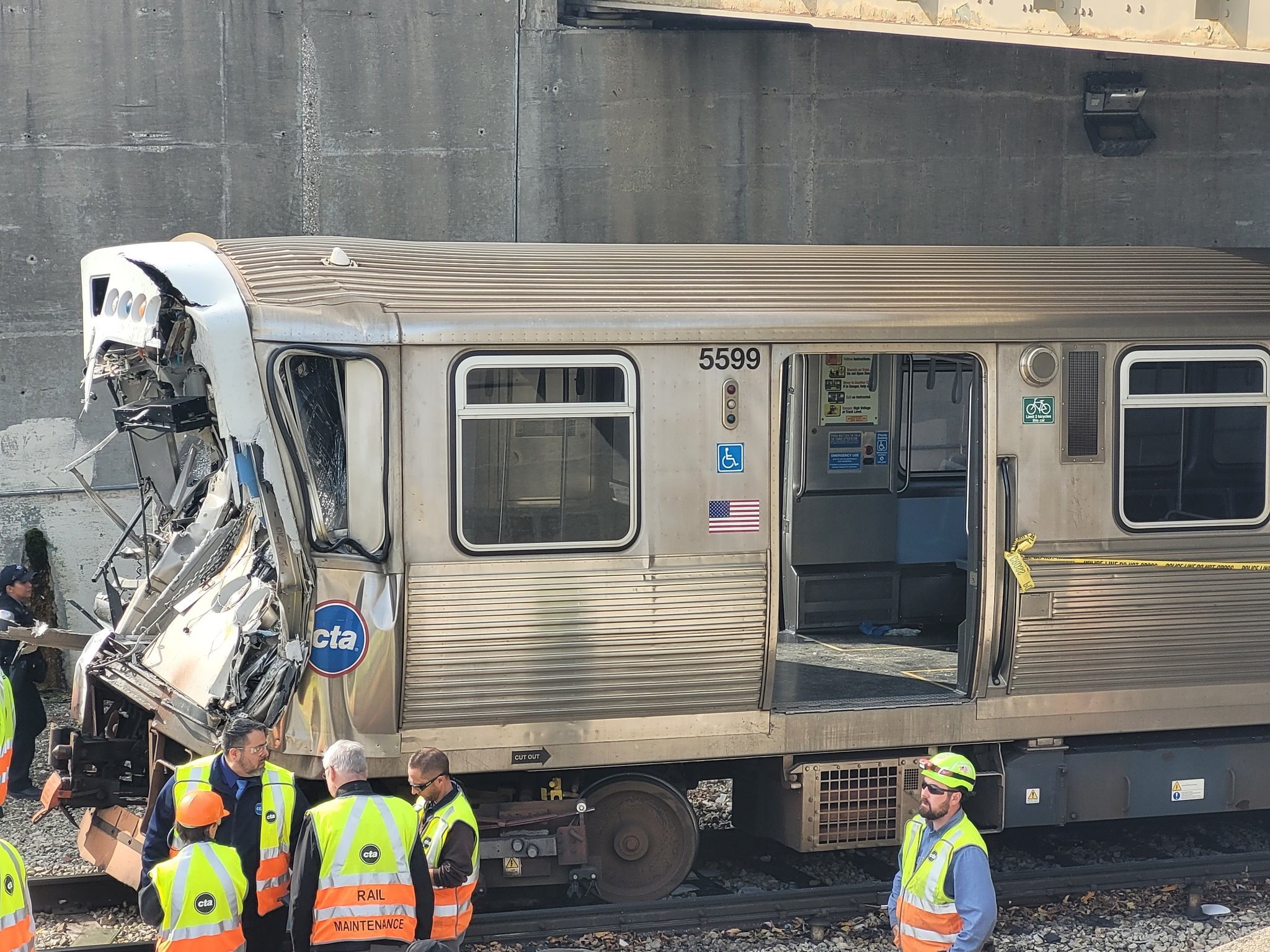Note: The video in the player above is from a previous report.
The Chicago Transit Authority said Wednesday that there is still no timetable for the reopening of the Yellow Line following a November crash that left 19 people hospitalized.
Responding to an inquiry from NBC Chicago, a spokesperson for the CTA said that the agency remains without an anticipated reopening date for the three-stop line also known as the "Skokie Swift."
Following a report from the National Transportation Safety Board last month, the CTA announced that the speed limit on Yellow Line trains will be reduced once the line eventually reopens.
NTSB chair Jennifer Homendy said last month that the CTA informed her agency it would reduce maximum train speeds from 55 mph to 35 mph on the North Side route, and down to 25 mph in the area near the Howard station where a train slammed into a snowplow on the track Nov. 16.
The Yellow Line remains closed more than three weeks after the collision that critically injured three people, including the operator, who “did not do anything wrong” according to the NTSB’s preliminary investigation, Homendy said.
The operator knew the plow was on the tracks for a training exercise and even passed it on an earlier run before the crash happened about 10:30 a.m. on a clear, 61-degree day, Homendy said.
But the operator didn’t know the plow’s exact location, and engaging the train’s emergency brake systems only slowed the train from 54 mph to 27 mph at impact, the NTSB noted in its initial six-paragraph report. It happened just after a bend in the track that may have reduced the operator’s visibility down the track.
A full investigation is expected to take months as federal officials examine the wrecked train’s components and try to recreate crash scenarios, Homendy said. Investigators are focusing on CTA rail signals, railcar brakes and track conditions that caused the wheels to slip at other points in the route before the crash.
Feeling out of the loop? We'll catch you up on the Chicago news you need to know. Sign up for the weekly Chicago Catch-Up newsletter.
CTA officials said the line will remain closed while they’re “engaged in an extremely thorough review of all aspects of the Yellow Line mentioned in the NTSB preliminary report, from signals to tracks to equipment, as well as testing trains to ensure safe operation.”
Homendy said the CTA sent her agency a Nov. 30 memo outlining the new Yellow Line speed limits, also noting that they are “cleaning the running rails to remove the debris and organic material that [the NTSB] identified.”
The CTA also said it would modify its track maintenance program and said they “have instituted some additional supervision,” according to Homendy.
But CTA officials “have not indicated any changes to the design or configuration of the system right now,” Homendy said, as the NTSB probes why a signal system that was configured for the train to stop within 1,780 feet actually needed 2,745 feet.
Thirty-one people, including the operator, were aboard the train as it approached the plow, which had six workers on board, the NTSB report says.
The plow was “stopped about 370 feet north of a red signal indication,” while the Yellow Line train was going 54 mph — below the 55 mph limit — when the operator got a signal command to stop due to the plow being about 2,150 feet ahead.
The operator “immediately initiated a full-service braking application.” After seeing the plow, the operator hit the emergency brakes and got the train down to 27 mph. Multiple braking systems working at once were unable to prevent the collision.
Video from inside the train showed the operator followed protocol by remaining standing as the collision approached, and he appeared “very engaged and looked to be in full control,” Homendy said.
According to a police report, the impact ejected another CTA employee from the snowplow. First responders found the man trapped under the plow.
The operator, who has not responded to Sun-Times requests for comment, told investigators “he was having some difficulty stopping the train” earlier in the route. A train system designed to stop wheel slippage was engaged the entire time, train logs showed.
The NTSB is investigating whether “debris or organic material” might have extended the stopping distance.
Two days after the crash, the NTSB suggested such residue could have been a factor in the crash.
The NTSB also said the CTA had been telling drivers their trains could stop faster than they actually can. The CTA had been using stopping estimates for older, lighter trains, the NTSB said.
Investigators are also probing whether a positive train control system — designed to automatically stop a train if an operator runs a signal or slow it down if it’s moving too fast — would have made a difference.
The NTSB recommended that system nationally in 2009 and to the CTA specifically in 2014 after a Blue Line train crashed into the terminal at O’Hare International Airport. The CTA was not required to install the technology because it’s exempted from the type of federal oversight given to Metra and Amtrak.
Damage to the Yellow Line train and other CTA equipment was estimated at $8.7 million, according to the NTSB. At least seven lawsuits have been filed against the CTA regarding the November crash.
Attorney Joseph Murphy, who represents six of the passengers, said in a statement that the CTA should have taken special precautions to ensure the safety of passengers.
“Whatever safety measures are now being recommended are too late for the people hurt due to avoidable incident,” Murphy said.



